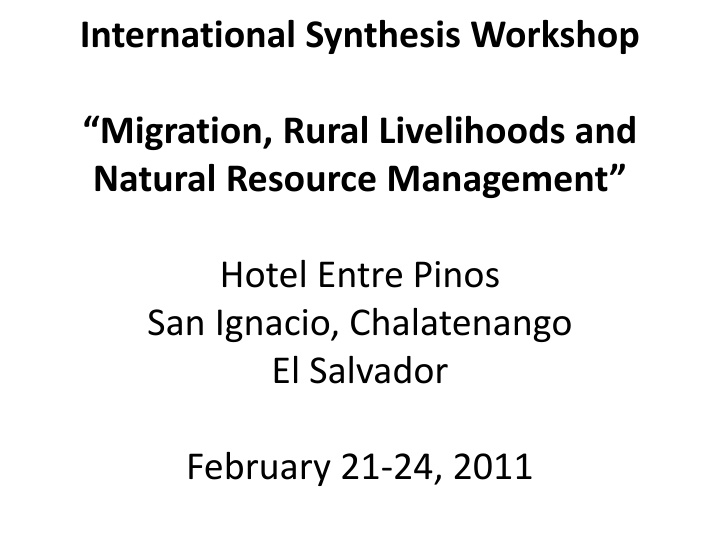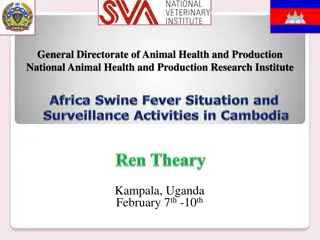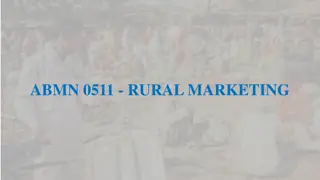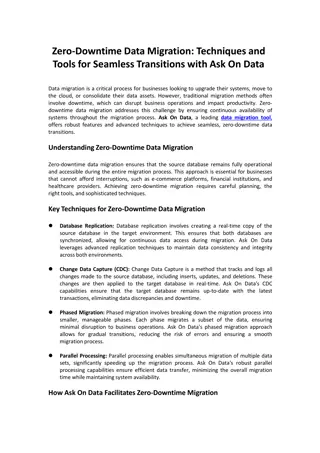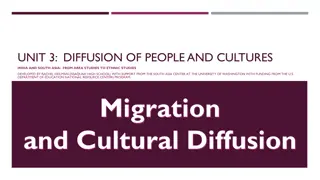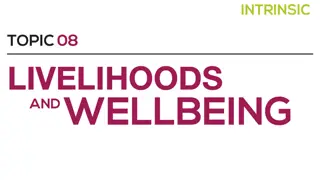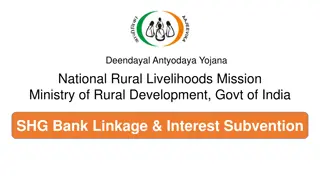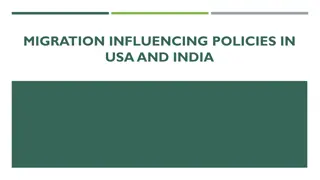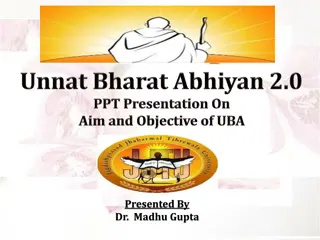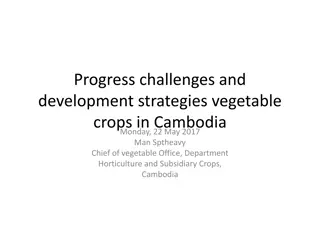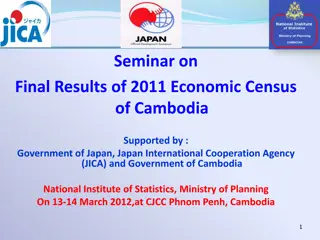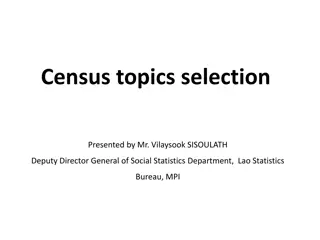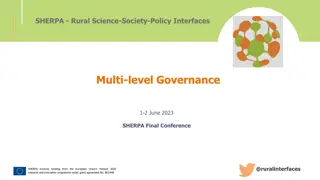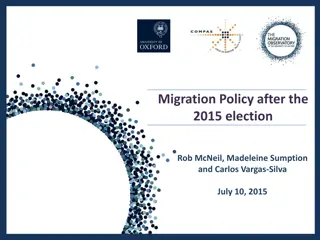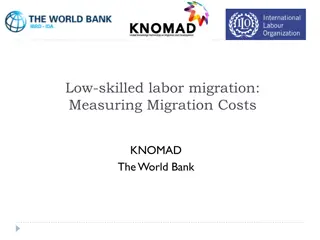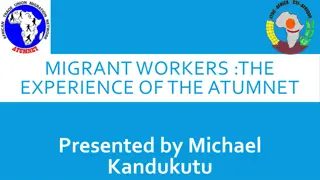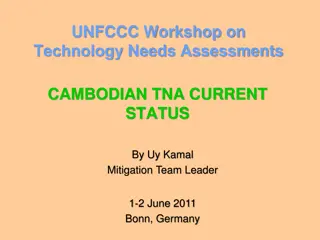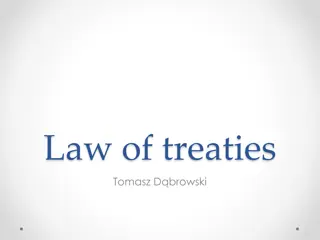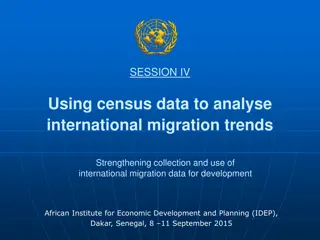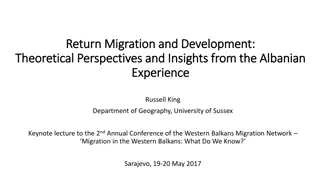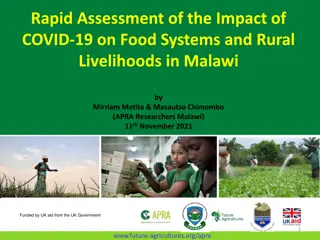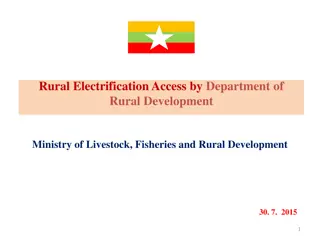International Workshop on Migration and Rural Livelihoods in Cambodia
Workshop highlights key issues on migration, rural poverty, and natural resource management in Cambodia. The event featured discussions on case study sites in Battambang, Prey Veng, and Phnom Penh, emphasizing labor migration, urbanization, and development cycles impacting livelihoods.
Uploaded on Sep 11, 2024 | 1 Views
Download Presentation

Please find below an Image/Link to download the presentation.
The content on the website is provided AS IS for your information and personal use only. It may not be sold, licensed, or shared on other websites without obtaining consent from the author.If you encounter any issues during the download, it is possible that the publisher has removed the file from their server.
You are allowed to download the files provided on this website for personal or commercial use, subject to the condition that they are used lawfully. All files are the property of their respective owners.
The content on the website is provided AS IS for your information and personal use only. It may not be sold, licensed, or shared on other websites without obtaining consent from the author.
E N D
Presentation Transcript
International Synthesis Workshop Migration, Rural Livelihoods and Natural Resource Management Hotel Entre Pinos San Ignacio, Chalatenango El Salvador February 21-24, 2011
Migration, Rural Poverty and Community Natural Resource Management in Cambodia Presented by Chanrith Ngin Director Graduate Program in Development Studies Royal University of Phnom Penh Cambodia Email: chanrith@rupp.edu.kh
Outline I. Background a. Characterization of case study sites b. Context/Drivers II. Analytical background III. Key issues/Lessons learned
I. Background a. Characterization of case study sites Research Sites Battambang Province Prey Veng Province Phnom Penh
Battambang Wetlands and lowlands of the Tonle Sap Lake and forested uplands towards the Thai border Rice bowl of Cambodia Labor migration (agriculture, construction, fishing) to Thailand Land transfers and forest land grabbing for agriculture and speculation
Prey Veng In the Lower Mekong Basin between Phnom Penh and the Vietnamese border With low agricultural production due to frequent drought Labor migration (garment, construction) to Phnom Penh Linkage between migrant garment and construction workers and motor-cycle taxi drivers living in the Tek Thla neighbourhood of Phnom Penh and of a developmental cycle in their households of origin and in conjunction with urban livelihood and social change
Phnom Penh Rapidly urbanized Key tourist attraction Magnet of migration for jobs (garment, construction, services, petty trade) and education
Rationale for Site Selection Based on a more focused concern, and to extend data gathering, on migration in the livelihood structure of rural households, on the interaction of armed force, land transfers and labour in Battambang and on the behavior and social capital of urban migrants from Prey Veng
b. Context/Drivers Push factors Battambang Landlessness Civil wars Natural calamity (flood, drought) Prey Veng Landlessness Low agricultural production Natural calamity (flood, drought) Debt from illness
Pull factors Battambang Land fertility Land and forest land availability Growth of industrial crop plantations and agricultural wage labour along the Cambodia- Thailand border Phnom Penh Job availability (esp. garment, construction) Hometown network
II. Analytical background In regard to labour, land and natural resource management the research findings are related particularly to three hypotheses: the rural household is the major manager of livelihoods diversification, including migration, managing a portfolio of livelihood sources and resources, and that migration for employment and migration in the search for land is an option which falls within the rationality of the peasant .
a causal relationship between migration, agro- ecological characteristics and land acquisition and use exists, which in rural areas links neighbouring villages and changes over space and time in response to external events such climatic disaster, armed conflict and changing market values. management of livelihoods may be seen as a latent function of the household, as an aspect of a developmental cycle in domestic groups, which may span the households, labour and financial resources and social capital of both rural household and urban migrant, representing Cambodian structural and cultural characteristics.
III. Key issues/Lessons learned In mainly agrarian Cambodia undergoing rapid and uneven economic growth, migration can be seen as: a principal factor in strategies for the mitigation or avoidance of poverty; one among a number of indicators of the emergence of a landless peasant class (as a culmination of an agrarian change involving transfers of land from small scale farming into landlordism and agro- industrial crop production systems); and a driving force in the creation of an urbanized Cambodia and of a dynamic and multiple (social and cultural) linkage of the rural community to the city.
Presence and use of armed force in land transfers and acquisitions depicts two contexts: territorialism, in which successive regimes have used land administration and distribution systems as a major instrument in asserting governmental authority; and the self-interested use of armed force, not authorized by a regime, but in the hands of military or ex-military who themselves seize and use land or collude with business interests and local authorities to acquire and transfer land, for financial gain and for long-term private expropriation, is an aspect of institutional deviance in Cambodian society and governance.
Households perform a pivotal role in the management of resources, including those of migrant labour, and in the deployment of a portfolio of livelihood choices and strategies. Urban job migrants represent an integral element of a dynamic urban environment. Migration should not be seen as a problem (negative stigma). Migration should be examined beyond remittances and should be associated with migrants social and cultural status, power relations at home village, and social and cultural bondage.
